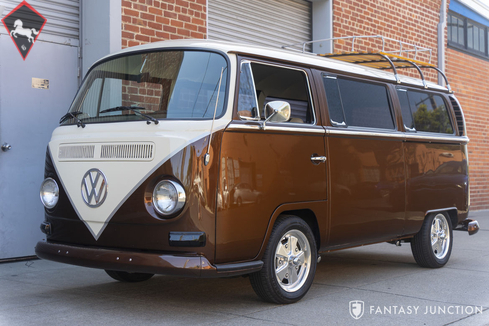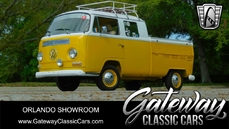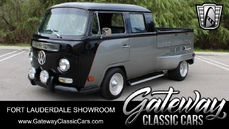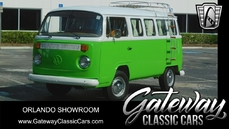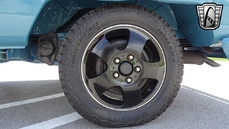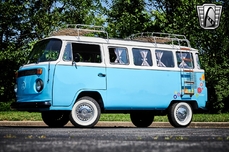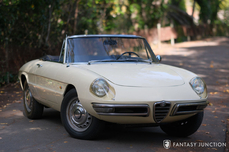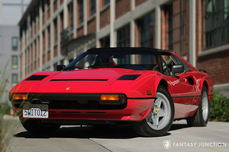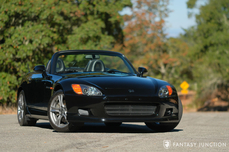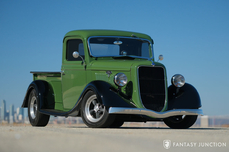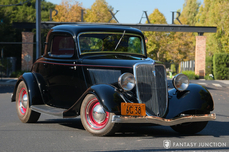Volkswagen Typ 2 Bay window 1.6L flat-4cylinder 1968
General description :
1968 Volkswagen Type 2 MicroBus
Chassis No. – 228101468
Engine No. – B0044343
Exterior Color – Two Tone Brown and White
Interior Color – Brown
Engine – 1.6 Liter Flat Four Cylinder
Transmission – 4-Speed manual transmission
Mileage – 82,884 miles TMU
Current owner – Purchased in 2015
Highlights of This Car
-Tastefully customized second-generation curved windscreen Microbus
-1600cc engine and 4 speed with custom interior, polished wheels, and detailed engine
General History
Unless you’ve been hiding under a rock for the past 70 years, chances are you’ve either owned, driven, or been a passenger in the ubiquitous VW bus. Known as the Transporter, Kombi, or Microbus, the Type 2 bus was the seminal vehicle that ushered in the genre of modern vans and delivery vehicles. By the 1960s, US built vans would appear from all American manufacturers, but the VW bus was first. Though the earliest Type 2 buses were used primarily for commercial purposes, they developed a dedicated following among anti-establishment counterculture in the 1960s, embodying the free spirit of the 1960s and adventurous lifestyle associated with camping, exploring, and living “off the grid”. Even VW caught on offering family oriented camper variants with additional aftermarket features including a roof-mounted boat, pop-out tent, and interior convenience appliances. By 1967, the second-generation arrived updated with notable changes including a single piece curved windshield, upper rear air intakes, 12 volt electrical system, half-shaft axles with CV joints, and a 1.6 liter engine. Continued under Volkswagen production, the new Type 3 would replace the iconic design with a more angular variant, making the second-generation the last of the originals.
Over the years, individuals have customized their Microbuses with personal touches making them unique and desirable as personal design statements, each as a unique part of VW bus history and import in modern culture. Today the VW bus remains an important and desirable cultural icon of freedom, independence, and lifestyle, transcending the category of automobile into a whole new lifestyle brand. Collectors frequently will spend upwards of six figures for the right Samba or 23 window variant, making these second-generation transporters very desirable for enthusiasts who enjoy driving and showing their unique buses.
History of This Bus
This Microbus has benefited from tasteful custom work performed on the exterior and interior with attention to the drivetrain, mechanical systems, and cosmetics. The build was based on a solid and drivable bus with generally good cosmetics. The body shell was stripped and painted using Sunset Bronze Mica and Antique White. A custom luggage rack was fabricated for the rear of the bus using wood and bent metal rod. The interior was configured with full carpet, front bucket seats with pass-through to the rear, and a versatile contoured rear bench seating area finished in two-tone materials.
Current ConditionToday this Microbus presents as a nice combination of restored and custom features reflective of factory specifications when delivered new with modest upgrades that retain the original character of the 1968 design. The two-tone paint is glossy throughout and properly applied with smooth coverage on the exterior surfaces. The mica flake brown has a nice warm root-beer color to it with the antique white adding a bit of vanilla ice cream, the combination of which suggests a refreshing root beer float. The fit and finish is quite nice overall with excellent panel fit to the hood, doors, rear window hatch, and engine lid. Some trim has been treated to a higher-level polish, while the rubber gaskets and various trim reflect confidence balancing a driver-level vehicle inside and out. The doors, rear window, and engine lid open and close smoothly from the outside and inside, including the single driver’s side rear sliding door. The overall condition of the lighting, lenses, and emblems is excellent. The glass is in very good condition throughout, bearing the Sekurit glass branding imprint on all glass panels with the exception of the curved windshield which has been replaced with a contemporary FY brand unit. The front and rear bumpers have been painted body color, blending nicely into the body and creating a smooth transition to the integrated front doorstep. A set of large 5-bolt pattern Fuchs-style wheels are polished and appropriately mounted giving the bus a nice custom, slightly lowered stance. A set of Mayrun radial tires are mounted. Both the front and rear turn indicators feature custom lenses.
The interior has been very well done with clever use of space, including L-shaped corner seating in the rear passenger compartment, two-tone upholstery, and nice use of carpeting and material accents finishing off the under-dash and side panels of the interior to a very pleasing level. The headliner appears to be an original type, while the various details on the stock dashboard remain original with a few exceptions including an aftermarket Sunpro tachometer, polished metal foot pedals, and an EMPI gear shift lever. A rear mounted Sharp flat-screen television monitor is included with the bus which is believed to have been planned for tailgating events when hooked up. Though no provisions are currently in place for power, vans like this frequently will have electronics installations powered by dedicated batteries. For now, the monitor can be safely stowed beneath the rear storage compartment above the engine.
The engine compartment is both cosmetically and mechanically tidy with very good finishes befitting the custom nature of the build. The engine is stamped with the BO series prefix, indicating this is a 1968-1970 non-US series engine. The engine compartment features a combination of generally authentic finishes with some mixed in custom touches including a few hardware enhancements, numbered engine pulley, single Solex carburetor, and correct corrugated aluminum ducting to finish off the engine compartment. The undercarriage is representative of a generally clean and enjoyable example though some areas are showing rust that has penetrated some of the floor and supporting rocker panel metal.
This is an excellent opportunity to acquire a nicely customized second-generation Microbus. Part of the iconic 1960s and continuing to excite collectors and enthusiasts today, this VW Type 2 Transporter is sure to excite the next worldwide generation of enthusiasts just as it has for so many years since its earliest inception.
https://fantasyjunction.com/inventory/1968-volkswagen-type-2-microbus/overview
1968 Volkswagen Typ 2 Bay window 1.6L flat-4cylinder is listed sold on ClassicDigest in Emeryville by Fantasy Junction for Not priced.
Car Facts
Car type : Car Make : Volkswagen Model : Typ 2 Bay window Model Version : 1.6L flat-4cylinder Engine size : 1.6 Model Year : 1968 Location : Emeryville Vehicle Registration : Normal
Sold
Seller Information
Sold
People who viewed this Volkswagen Typ 2 Bay window also viewed similar Volkswagen listed at ClassicDigest
Other cars listed for sale by this dealer
About Volkswagen
The Volkswagen story is indeed an intriguing tale of innovation, resilience, and post-war revival, marked by various models that have become iconic in automotive history.The People's Car (Volkswagen): Initially envisioned by Adolf Hitler in the 1930s as a "people's car" or "Volkswagen" in German, the idea was to create an affordable and practical vehicle for the German people. This concept led to the development of the Volkswagen Beetle (or the Type 1), designed by Ferdinand Porsche.
Post-War Challenges: After World War II, Volkswagen faced significant challenges. The factory was heavily damaged, and the brand's association with the Nazi regime led to a lack of interest in the car in some regions.
British Intervention - The British Army & Ivan Hirst: The British Army took control of the factory in the immediate post-war period. Major Ivan Hirst, a British Army officer, played a crucial role in reviving Volkswagen. He recognized the potential of the Beetle and advocated for its production, convincing the British military to order several thousand cars. This decision helped jumpstart the brand's revival.
Export Success and the Beetle's Global Appeal: The Beetle gained popularity not only in Germany but also globally, becoming an icon of affordable motoring. Its simple, reliable design and unique appearance made it a favorite among consumers worldwide.
Model Evolution: Over the years, Volkswagen introduced various models alongside the Beetle, each contributing to the brand's growth:
Type 2 (VW Bus or Transporter): Introduced in the 1950s, it became an iconic symbol of the hippie movement in the 1960s, loved for its spaciousness and versatility.
Golf (Rabbit in the U.S.): Launched in the mid-1970s, the Golf (or Rabbit in the U.S.) marked a shift towards front-wheel-drive, modern design, and hatchback practicality, becoming a cornerstone of the brand's success.
Passat, Jetta, and Other Models: Volkswagen expanded its lineup with models like the Passat and Jetta, catering to different market segments.
Challenges and Innovations: Despite success, Volkswagen faced challenges, including quality issues in the 1970s. However, the brand continued to innovate and develop new models and technologies.
Rise of the GTI and Global Expansion: The 1980s saw the rise of the iconic Golf GTI, a high-performance version that sparked the hot hatch trend. Volkswagen also expanded its global presence during this period.
The British intervention in reviving Volkswagen after World War II played a pivotal role in the brand's resurgence. While there might have been some tensions or competition among automotive companies in the 1950s and 1960s due to Volkswagen's post-war success, the brand's ability to produce innovative and popular models solidified its place in automotive history.
